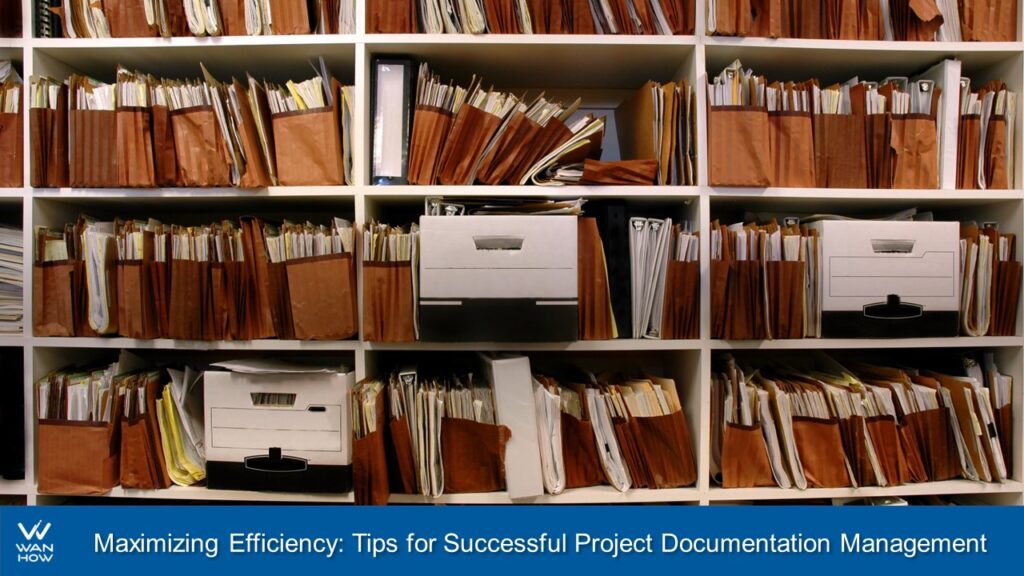Managing project documentation can be a tedious and time-consuming task, but it’s essential for the success of any project. Efficient documentation management ensures that everyone involved in the project has access to the necessary information, which helps to minimize errors, delays, and potential misunderstandings. As a project management coach, I understand the importance of maximizing efficiency in all aspects of a project. In this article, I’ll be sharing some tips and strategies for successful project documentation management that will help you stay organized, improve communication, and streamline the entire process. Whether you’re working on a small or large project, these tips will help you stay on top of your documentation, save time, and ultimately increase your chances of success. So, let’s dive in and explore how you can maximize your efficiency in project documentation management.

Understanding project documentation management
Project documentation management refers to the process of creating, storing, and managing project-related documents. This includes everything from project plans, schedules, and budgets to meeting minutes, progress reports, and communication logs. The purpose of project documentation management is to provide a centralized source of information for everyone involved in the project. This ensures that everyone has access to the latest information and can make informed decisions based on that information.
Why project documentation management is important
Effective project documentation management is critical to the success of any project. It helps to ensure that everyone is on the same page and working towards the same goals. It also helps to prevent misunderstandings, delays, and errors by providing a clear and concise record of all project-related activities. In addition, project documentation management can help to facilitate communication and collaboration among team members, stakeholders, and other key players.
Types of project documentation
There are many different types of project documentation, and the specific types of documents you need will depend on the nature and scope of your project. Some common types of project documentation include:
– Project charter: This document outlines the purpose, goals, and scope of the project.
– Project plan: This document details the timeline, budget, and resources required to complete the project.
– Risk management plan: This document identifies potential risks and outlines strategies for mitigating those risks.
– Communication plan: This document outlines how communication will be managed throughout the project.
– Meeting minutes: These documents summarize the key points discussed during project meetings.
– Progress reports: These documents provide updates on the status of the project and highlight any issues or concerns.
Best practices for project documentation management
To maximize efficiency in project documentation management, it’s important to follow some best practices. Some of these best practices include:
– Establishing clear documentation policies and procedures
– Defining and communicating roles and responsibilities
– Using templates and standard formats for documents
– Establishing a centralized repository for project documents
– Regularly reviewing and updating project documents
– Ensuring that all project documents are easily accessible and searchable
– Ensuring that all project documents are properly secured and backed up
Tips for effective project documentation management
In addition to following best practices, there are some specific tips that can help you to improve your project documentation management. Some of these tips include:
– Start early: Begin documenting your project as soon as possible, even if you’re still in the planning stages.
– Be consistent: Use consistent naming conventions, formats, and templates for all project documents.
– Prioritize: Identify the most important documents and prioritize their creation and management.
– Use automation tools: Consider using software tools to automate document creation, management, and distribution.
– Communicate regularly: Ensure that all team members are aware of the latest project developments and updates.
Common mistakes to avoid in project documentation management
There are also some common mistakes that can be made in project documentation management. These mistakes can lead to confusion, delays, and other issues. Some common mistakes to avoid include:
– Failing to define clear documentation policies and procedures
– Not keeping documents up-to-date
– Failing to back up project documents
– Not properly securing project documents
– Failing to communicate effectively with team members and stakeholders
Tools and software for project documentation management
There are many tools and software programs available to help with project documentation management. Some popular options include:
– Microsoft Office: Provides a suite of tools for creating, editing, and managing project documents.
– Google Docs: A cloud-based document management system that allows for collaboration and real-time editing.
– Trello: A project management tool that includes document management features.
– Asana: A project management tool that includes document management features.
– Dropbox: A cloud-based file storage and sharing system that can be used for project document management.
How to organize and prioritize project documentation
Organizing and prioritizing project documentation can be a challenge, but there are some strategies that can help. One approach is to categorize documents based on their importance and urgency. For example, you might have a “critical” category for documents that are essential to the project’s success, and a “non-critical” category for documents that are less important. You can also use tags or labels to help you quickly identify and locate specific documents.
Ways to streamline project documentation processes
To streamline project documentation processes, it’s important to identify any bottlenecks or inefficiencies and address them. Some strategies for streamlining project documentation processes include:
– Automating document creation and management
– Using templates and standardized formats
– Implementing document version control
– Reducing the number of required documents
– Encouraging collaboration and communication among team members
Conclusion
Effective project documentation management is essential for the success of any project. By following best practices, using the right tools and software, and avoiding common mistakes, you can maximize your efficiency and ensure that everyone involved in the project has access to the latest information. By organizing and prioritizing your documentation, you can improve communication and collaboration, minimize errors and delays, and ultimately increase your chances of success.
Need help with project documentation management? Schedule a strategy session.
